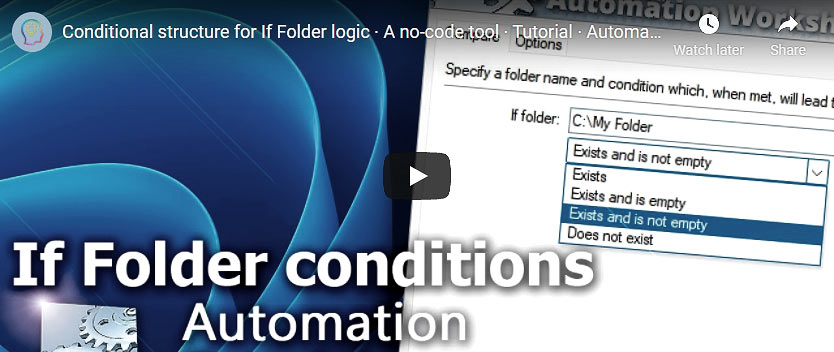The If Remote Directory Action checks (on a remote server) if a specified directory exists and whether it is empty or contains files. When the check matches the criteria, a sequence of associated Actions is executed.
This Action can be complemented with the Else Action, which runs a nested group of Actions when the directory's status does not match the criteria.
| Compare | Details |
|---|---|
| If directory | Specify a remote directory to check its status. |
| Compare | Specify the directory status that will trigger conditional execution of the Action group:
|
| Use connection | Select an existing connection to use for directory presence verification. If there are no defined connections, the new connection window will be opened to establish a connection to FTP, SFTP, WebDAV, Amazon S3, Google Cloud Storage, or DigitalOcean Spaces server. |
| Variable Wizard |

Interconnect
- If Remote Directory integration and auditing—Variables (dynamic data) and Events (recorded activity). Access the directory name, selected comparison, and whether the condition matched the directory's status. Additionally, information events indicating the directory's current state are logged.
More comparisons…
Automation Workshop offers specialized Actions tailored to various resources. Each of them features an intuitive interface designed for a specific resource type. Explore more comparison options:
- If · Overview
- If Remote File · Overview
- If File · Overview
- If Folder · Overview
- If Service · Overview
- If App · Overview
File comparison Actions allow you to verify the existence or absence of files and check if a file is currently being written to or used by other applications. Folder and directory comparison Actions enable you to verify the existence or absence of local folders and remote directories, as well as check if they are empty, not empty, or does not contain files.
Branching alternatives…
While If–then logic is the most widely used approach to split a Task into two execution paths, there are additional methods to branch an automated workflow · Action flow explained
Need help?
If you have any questions, please do not hesitate to contact our support team.

